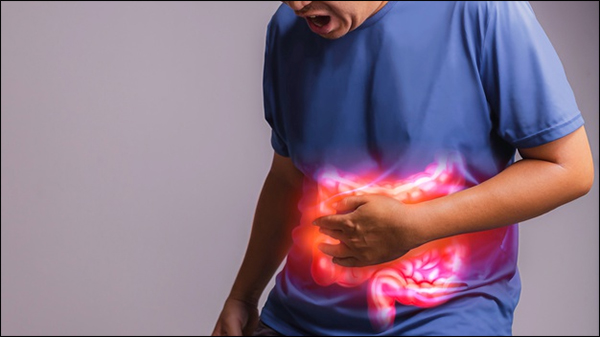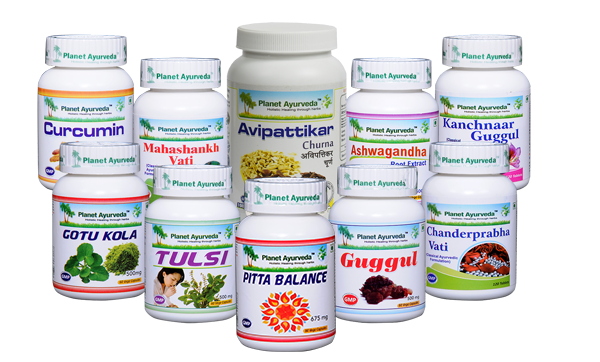How Ayurveda Aids in Treating Stomach Cancer?
Abstract
The stomach is a muscular organ located in the left side of the upper part of abdomen, just below the ribs. The main function of the stomach is receiving and holding the food and then helps to break down and digest it. Stomach aids in digestion by secreting the acid and enzymes required for proper metabolism of food. Many diseases affect this normal functioning of the stomach. One of the serious diseases among those is stomach cancer. In this article we are going to discuss stomach cancer in brief, its sign and symptoms and its best management according to Ayurvedic principles.
Introduction
Stomach cancer is an abnormal growth of cells which has an origin in the stomach. Gastric cancer is another name for stomach cancer, and it can affect any part of the stomach, most commonly affecting the main part of the stomach i.e. stomach body. Stomach cancer tends to develop gradually and slowly over decades. Before the development of the true cancerous stage there must be precancerous alterations that often occur in the mucosa of the stomach. For understanding the concept of gastric cancer better it is must that one knows about the anatomy of the organ.
Anatomy of Stomach
The stomach has five parts i.e. cardia (first part connected to esophagus), then fundus, body (corpus- the main part of stomach), antrum (lower portion where the food is mixed with gastric juices), and lastly pylorus which act as a valve that monitors the emptying of stomach contents into the duodenum (first part of small intestine). Further, the stomach consists of five layers i.e. the innermost layer is mucosa, where the digestive enzymes and gastric acid are formed. This is the most common site for gastric carcinomas. Next layer is submucosa, and then there is a thick layer of muscles- muscularis propria layer that moves and mixes stomach contents. The other two outer layers include subserosa and serosa (outermost layer).
These layers are important in determining the extent of cancer and also aids in accessing the disease’s prognosis. As the cancerous overgrowth starts spreading or growing from mucosa to deeper layers, the stage becomes more advanced and its prognosis also worsens.
Let’s have a brief on types of cancers that are included under gastric cancers-
- Adenocarcinoma- The most common type of gastric carcinoma is adenocarcinoma (about 90%- 95%). This cancer develops from the cells of mucosa (innermost lining of the stomach).
- Lymphoma– are cancers involving the immune system tissues and are found on the walls of the stomach.
- Gastrointestinal stromal tumors (GIST) are rare tumours that start to develop in interstitial cells of Cajal (very early forms of cells in the stomach wall). These tumors involve both cancerous and non-cancerous (benign) forms. These can be found anywhere in the gastrointestinal tract, but most commonly found in the stomach.
- Carcinoid tumors start in the cells of the stomach that are involved in hormone-making. Most of these tumours had a tendency not to spread on to other organs.
- Other carcinomas, such as squamous cell carcinoma, leiomyosarcoma, and small cell carcinoma are very rare.
Sign and Symptoms
The early stages of gastric carcinomas are usually asymptomatic and thus often remain unnoticed. Further, the clinical feature involved in the stomach cancer depends upon the part involved and severity of the disease. Few common clinical features of stomach cancer include difficulty in swallowing, bloating after meals, reduced appetite, anemia, abscess, GI bleeding, nausea, heartburn, indigestion, stomachache, vomiting and unintentional weight loss and chronic fatigue.
Causes
The exact cause of stomach cancer is not very clear. However few risk factors are identified and considered for the development of stomach cancer. These include obesity, gastro esophageal reflux disease, high saline diet and smoked foods, low consumption of fruits and vegetables, family history of stomach cancer, recurrent or prolonged infection with Helicobacter pylori, long-term stomach inflammation (gastritis) and smoking.
Diagnosis
The diagnosis can be made on clinical features, physical examination and on investigation that includes upper endoscopy, barium meals X-ray or CT- scan of stomach, and biopsy of stomach cells on basis of endoscopy, is done for making exact diagnosis of stomach cancer.
Ayurvedic View
The concept of stomach cancer is best correlated with sannipataj gulma in Ayurveda. Gulma is a broad term given to various benign or malignant tumors or lumps of the abdomen. Here, due to the vitiation of tridosha lead to the formation of nichaya gulma (another name for sannipataj gulma) in the stomach. The symptoms of Nichay gulma as stated by Acharyas are very painful lump, burning, prominent and hard lump in abdomen, tendency of early inflammation and spreading, having severe manifestations, loss of strength and digestive power.
Further Acharya Vaghbhatta had given the symptoms of antargulma (internal abdominal tumours) that include.
The clinical features of antragulma include loss of digestive power, loss of complexion and strength, decreased frequency of stool and urine, pain in abdominal organs, etc.
Treatment
Planet Ayurveda is an herbal manufacturing unit. The formulations made here are being supplied all over the globe. The products made here are 100% natural in origin. Herbal remedies as suggested by Planet Ayurveda’s team for management of Stomach cancer-
- Kanchnaar guggul
- Curcumin Capsule
- Tulsi Capsule
- Guggul Capsule
- Gotukola Capsule
- Ashwagandha Capsule
- Pitta balance
- Mahashankh vati
- Avipattikar churna
- Chandraprabha Vati


Product Description
1. Kanchnaar Guggul
Kanchnaar guggul is a classical poly herbal preparation well known for its anti-inflammatory effects. It helps in reducing the size of the tumour, and resulting in the shrinkage of the cancerous overgrowth.
Dosage- 2 tablets twice daily with water after meals.
2. Curcumin Capsules
Curcumin Capsules is the standardized extract of Curcuma longa. It is an abundant source of antioxidants, preventing the cancer from further spreading, and becoming more dangerous and life threatening.
Dosage- 2 tablets twice daily with water after meals.
3. Tulsi Capsules
Tulsi Capsules is made from the extract of Ocimum sanctum . Tulsi catalyses the digestion and is helpful in treating the ulcers and thus helping the cancer patients in maintaining their gut health.
Dosage- 1 capsule twice daily with plain water after meals.
4. Guggul Capsules
Guggul Capsule is the best herbal extract obtained from Commiphora mukul and it contains the phytochemicals (plant steroids) that lower triglyceride and cholesterol, aiding in reducing obesity, one of the potential risk factors of stomach cancer.
Dosage- 1 capsule twice a day with water after meals.
5. Gotu kola Capsules
Gotukola Capsule is considered as an amazing supplement for improving the condition of stomach ulcer and many inflammatory gastric diseases. As it contains the standardised extract of mandukaparni (Centella asiatica) which is known to have asiaticoside on inducible nitric oxide synthase, that promotes the healing of the gastric mucosal lining and preventing its overgrowth.
Dosage- 2 capsules two times daily with plain water after meals.
6. Ashwagandha Capsules
Ashwagandha Capsule helps in gastric carcinoma patients by providing strength to them. The ingredient of this capsule is the standardised extract of Withania somnifera, which is helpful in managing weight loss conditions in stomach cancer patients.
Dosage- 1 capsule twice daily after meals with plain water.
7. Pitta Balance
Pitta balance include the ingredients such as Praval pishti, jahar mohra pishti, akik pishti (pisht refers to the Ayurvedic clax obtained from minerals), along with giloy satva (Tinospora cordifolia extract). This formulation helps to maintain balance of pitta dosha in the body and also supports the immune system for controlling and checking the growth of tumour cells, thus helpful in stomach cancer.
Dosage- 1 capsule twice daily with water after meals.
8. Mahashankh vati
Mahashankh vati is a classical solution for various pain related and other abdominal discomforts. It is an amazing remedy for digestion of endotoxins, bloating after meals, stomach ache, and reduced appetite like symptoms of stomach cancer. It is a herbomineral formulation that consists of Chitrak (Plumbago zeylanica), shankh bhasma (purified ash of conch shell), Rock salt, black salt etc. which helps maintain healthy metabolism and digestion.
Dosage- 1 tablet twice daily after meals with water.
9. Avipattikar Churna
Avipattikar churna is the classical remedy for hyperacidity and its symptoms. As gastric carcinoma have heartburn, bloating and other abdominal discomforts, this formulation is best for relieving those manifestations. This formulation consists of sunthi (Zingiber officinale), Maricha (Piper nigrum) and Haritaki (Terminalia chebula) like herbs.
Dosage- 1/2 teaspoonful two times daily with lukewarm water after meals.
10. Chanderprabha Vati
Chandraprabha Vati is the classical formulation which includes Guggul (Commiphora mukul), haridra (Curcuma longa), ativisha (Aconitum heterophyllum) etc, which aids in removing the excess fluid deposits from the body and pacifying the aggravated doshas. It is also responsible for strengthening the gastrointestinal lining and thus preventing the carcinomatous overgrowth of the stomach lining.
Dosage- 2 tablets two times a day with water after meals.
Contact Planet Ayurveda to provide you the costing / ordering and delivery information at – costing.planetayurveda@gmail.com or call at +91-172-5214030 Or Check Website – www.PlanetAyurveda.com
Conclusion
In the end it is concluded that proper use of these formulations along with some healthy diet and lifestyle modification is very much effective and beneficial in managing stomach cancers, and enhancing the lifespan of the patients rather than going for radiation or chemotherapy which have very drastic side effects.




